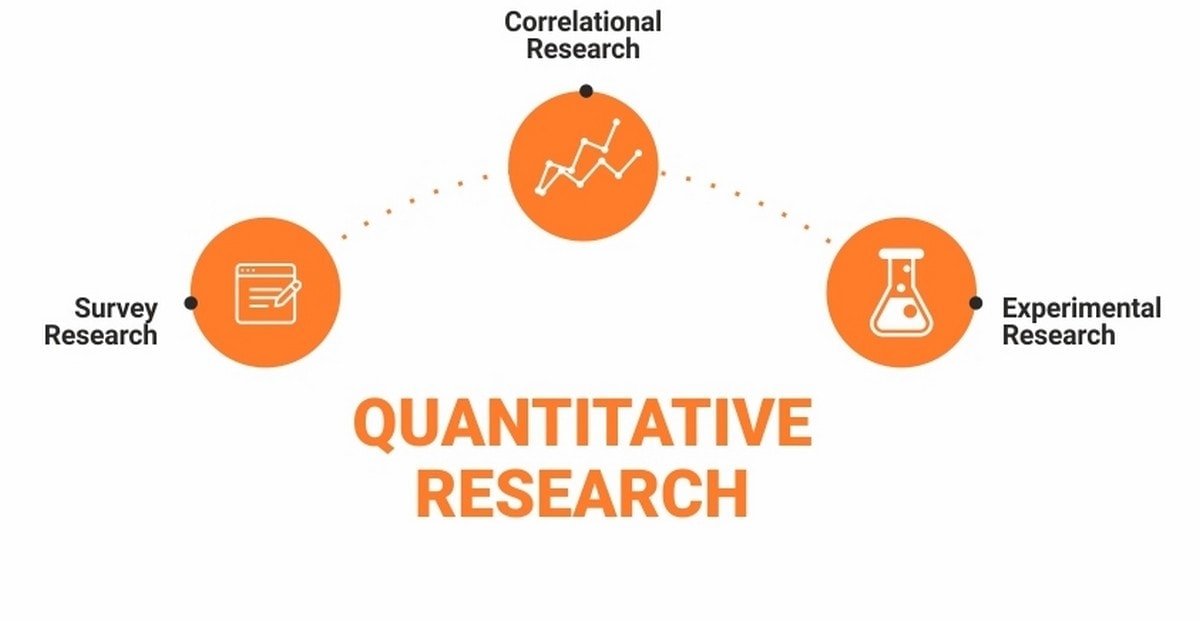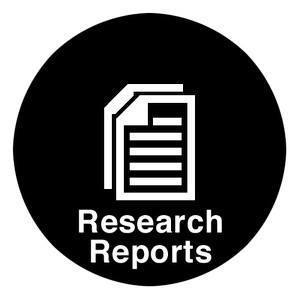
11 Types Of Quantitative Research options for Market Researchers
11 Types Of Quantitative Research options that exist for Market Researchers
Quantitative research involves methodical analysis of phenomena by means of collecting quantifiable data and then carrying out mathematical, statistical, or computing techniques. To conduct quantitative research, methods like online survey, questionnaires, sampling methods etc. are used and the outcome from these methods is represented in numerical form.
After that, a careful analysis of these results is carried out to foresee the future of the product and changes are made accordingly. For example, a survey has been conducted to determine, how much total amount of time a restaurant staff takes to serve to a customer after he walked into the restaurant.
A customer satisfaction survey is prepared where questions like how long do you have to wait before a waiter come to take your order, how frequently customers walk into a restaurant and other similar questions. quantitative research is mostly conducted in social environments on statistical data collected using this research method. In this type of research, statistician and researchers form theories and mathematical frameworks that refer to the quantity being researched.
The templates used in quantitative research are elaborated, objective and investigational in nature. unlike other research, the outcome of this research method is unbiased, statistical, and logical. Data is collected using structured techniques and performed on a large population so that the general outcome can be obtained.
Followings are the different types of quantitative researches methods.
There is mainly two types of quantitative research methods with several sub-types. Let’s learn about them one-by-one.
Table of Contents
1) Primary Quantitative Research Methods
Primary quantitative research method has for sub-types. This type of research is mostly used in conducting marketing research. Primary quantitative research depends on the data collected rather than on the data collected from the previous research conducted. Here are the four sub-types of primary quantitative research method.
Followings are the different type of Primary Quantitative Research Methods
A) Survey Research :
this research is the most fundamental tool for all types of quantitative researches techniques. different types of polls like online survey, online polls, paper questionnaires, web-intercept surveys are used to ask a set of questions from a sample of participants. This is the most common technique used by both small and big organizations to understand their customers and to know about their view about their products. In this research, multiple questions can be asked from the customers and then it can be analyzed to produce numerical data.
This research is the first step before any other type of research is conducted. This research can be conducted on a single group or on multiple groups followed by comparative analysis. Participants of this research must be randomly selected. In this way, rational outcomes can be obtained from a vast variety of participants.
Conventionally, this type of research was conducted by conducting face-to-face interviews or by making phone calls, but nowadays, because of the intervention of technology data can be collected by online survey or online polls. Cross-sectional and longitudinal are two types of surveys which can be used to conduct this type of quantitative research.
1) Cross-sectional survey :
This survey is also called observational survey. This survey is conducted on a target population at a given point of time. In this survey, the researcher can evaluate different variables at the same time. Cross-sectional surveys are used to conduct research mostly in retail stores, health care industry or SMEs.
2) Longitudinal Survey :
This survey is also an observational survey, but in this type of survey, research is conducted at various time durations. This way researcher can analyze the thought-processes and behavior of different participants. In a longitudinal survey, one variable is evaluated at different times. This type of surveys is useful in circumstances where a sequence of events matters. Longitudinal surveys are the right choice to use in medicine and applied sciences fields.
3) Correlational Research :
the purpose of conducting this type of research is to establish a relationship between two closely woven entities and to understand how one entity influences others and the changes observed are analyzed. To conduct this study, a researcher at least needs two separate groups. With the help of this method naturally occurring relationship between two entities is analyzed. Quantitative research is used to associate two or more than two variables by means of mathematical analysis methods. Researcher modifies one variable to observe its impacts on another variable. The appropriate examples of correlational research are the relationship between sadness and depression, and the relationship between students and 6th-grade class.
4) Causal-Comparative Research (Quasi-experimental research) :
This research method works on the comparison. In this research experiment, the researcher identifies the cause-effect relationship between two or more variables. Out of two variables, one variable is dependent on the other. To conduct this research, the researcher establishes one variable without modifying it and observe its impacts on another variable. This research is not only restricted to the statistical analysis of two variables, however, but impacts can also be observed on different variables in a group. For example, the impacts of sports on children, the impact of parents’ divorce on children.
5) Experimental Research :
this research is also referred to as true experimentation. It is based on one or more than one theory. This research is conducted to accept or refute a statement. This type of research is mostly used in natural sciences or in social science because there are many theories to be proved right or wrong. Multiple theories can be used to conduct this research. Researcher establishes the statement and after establishing this researcher makes efforts to verify whether the statement is valid or invalid. For example, it is boon to have a dedicated teaching staff for a high success rate of students or conventional methods of cooking are better than the modern methods.
Different Data Collection Methods used in Primary Quantitative Research method:
6) Sampling methods:
methods can be sampled in two ways for quantitative research
a) Probability Method :
The participants for the research are selected randomly from the population. Each member of the group is selected fairly. Probability sampling can be done using four techniques such as
Cluster sampling :
A large population is divided into two parts depending on the geographical or demographical areas and then participants are chosen randomly.
Simple Random Sampling :
In this method of sampling, participants are selected from a large population randomly.
Stratified Random Sampling :
In this method, the population is divided into two strata and samples are randomly selected from them.
Systematic Sampling :
In this method, samples are selected at fixed intervals. The interval is decided by population size divided by sample size.
Non-Probability Sampling :
In this method, samples are not selected randomly. Researcher uses his own knowledge and experience to choose participants. Because of the involvement of the researcher, not all participants have equal probability to get selected.
Followings are the different types of non-probability sampling :
Convenience Sampling: these types of samples are easy and quick to select. Because of researcher select participants as per his own convenience.
Consecutive Sampling :
This type of sampling is quite similar to convenience sampling with one distinction that a researcher can select one group and conduct research for a significant period of time and then move to the next group.
Snowball sampling :
This type of sampling is used where only targeted participants are selected to conduct the study. It is mostly used in cases where participants are difficult to gather.
Quota Sampling :
researcher chooses members of a group on the basis of his knowledge of certain elements.
Judgmental Sampling :
In this type of sampling, participants of research are selected only on the basis of the researcher’s knowledge and skills.
B) Secondary Quantitative Research Method :
Secondary Quantitative Research also is known as desktop research and uses existing data to conduct research. The data collected is summarized and organized to enhance the effectiveness of research. The data is collected from various sources like research reports, libraries, government records, and internet. The secondary Quantitative research is also to validate the outcomes of primary Quantitative research. Hence, the outcomes from primary Quantitative research can be validated or refuted on the basis of previously collected data.
There are five main methods to collect data through Secondary Quantitative research
7) Government and Non-government resources :
To conduct this type of research which deals with market research reports government and non-government data can be used. The data collected from government records are reliable and detailed, therefore, it can be used to validate quantitative research’s outcome.
8) Data available on the Internet :
because of the advancement of technology and penetration of internet in every field, a large amount of data can be collected about every topic. Comprehensive information about various research topics is available on the internet. There are several forums, blogs, and websites where people share about their study and outcomes of research conducted by them. A researcher can use that information and use it to conduct his own research.
9) Educational Institutes :
Educational institutes conduct research on a variety of topics and publish their outcomes. Reports from educational institutes can be used to validate the outcomes of research.
10) Public Libraries :
libraries are a trustworthy source of information. Public libraries keep copies of important research studies. The abundant information from this source can be used to verify the research.
11) Commercial Information Sources :
Newspaper, journals, Radio, journals, and Television are a great source of information and a lot of data can be obtained from these resources to conduct secondary research. These commercial information sources have fresh information about economic developments, market research, political agenda, and demographic segmentation etc. however, not all commercial information sources are reliable. One should choose information from them on the basis of their credibility.








